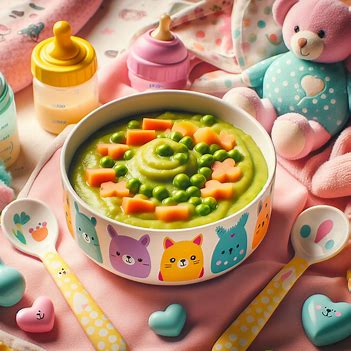Chapter 1. Introduction
Understanding the Importance of Child Safety at Home
Ensuring a haven for our little ones is paramount. Within the comforting walls of our homes, a myriad of potential hazards lurk, necessitating a vigilant approach to child safety. Understanding the gravity of this issue is the first step toward creating a secure environment.
Statistics on Home-Related Accidents Involving Children
The prevalence of home-related accidents involving children is staggering. Each year, thousands of incidents occur within the confines of homes, underscoring the necessity of proactive safety measures. Statistical insights shed light on the urgency of safeguarding our living spaces.
- Child-related accidents at home: [Statistic Source]
- Most common types of accidents: [Data Breakdown]
Impact of Safe Environment on Child Development
A safe environment isn’t just a luxury but a fundamental right for children. It goes beyond physical safety, significantly influencing their cognitive and emotional development. Research consistently emphasizes the correlation between a secure environment and a child’s overall well-being.
- Cognitive benefits of a safe environment
- Emotional stability and secure surroundings
Introducing the Concept of Childproofing
Childproofing is the proactive approach to mitigating risks and dangers within our homes. It involves a multifaceted strategy encompassing various safety measures tailored to different areas and stages of a child’s development.
The Role of Childproofing in Home Safety
Childproofing transcends the mere act of installing safety gadgets. It’s a holistic strategy, involving education, assessment, and action. Highlighting its role elucidates the comprehensive nature of safeguarding our spaces.
- Creating a child-friendly space through proactive measures
- Aiming for a conducive environment for exploration and growth
Overview of Recommended Safety Products
In tandem with childproofing, leveraging safety products is pivotal. These products serve as guardians, fortifying our homes against potential risks. An overview acquaints us with the arsenal available to fortify our homes.
Types of Safety Products for Different Home Areas
From electrical safety devices to furniture anchors, the array of safety products is extensive. Tailoring these products to specific areas within our homes ensures a comprehensive safety net.
- Electrical safety gadgets and their role
- Furniture and household products enhancing child safety
This chapter sets the stage for a comprehensive understanding of child safety at home. Recognizing the significance of a secure environment, backed by statistics and the concept of childproofing, primes us to delve into actionable strategies and recommended safety products.
Chapter 2. Childproofing the Living Room
Identifying Risks in the Living Room
The living room, often the heart of family life, can harbour unsuspected hazards for curious little explorers. Understanding these lurking risks is fundamental to ensuring a secure environment.
- Common Hazards for Children in Living Spaces
- Furniture Edges and Sharp Corners: Often overlooked, these pose collision risks.
- Electrical Outlets and Cords: Potential sources of accidents.
- Decorative Items: Fragile decor that can break and cause harm.
- Furniture and Decor Considerations for Safety
- Rounded Edges and Corner Protectors: Mitigating risks of collisions.
- Cable Management Solutions: Tucking away cords and cables out of reach.
- Strategic Furniture Placement: Ensuring stability and avoiding tip-overs.
Recommended Safety Products for the Living Room
Creating a child-friendly living space involves integrating safety measures seamlessly into the aesthetics and functionality of the room.
- Child Safety Gates: Types and Installation Guide
- Pressure-Mounted Gates: Suitable for temporary needs.
- Hardware-Mounted Gates: Ideal for permanent placement.
- Corner Protectors and Furniture Anchors
- Soft Cushioned Corner Guards: Protection against sharp edges.
- Anchors and Straps: Securing furniture to prevent tipping accidents.
- Safe Storage Solutions for Toys and Electronics
- Storage Bins and Cabinets: Encouraging organized and safe storage.
- Cable Management Boxes: Concealing and organizing electrical cords.
Childproofing the living room is a meticulous process that involves a blend of risk identification and strategic placement of safety products. By addressing these risks and implementing appropriate safety measures, we create a nurturing environment for our little ones to explore safely.
Chapter 3. Securing the Kitchen and Dining Areas
Risks and Hazards in the Kitchen
The kitchen, a bustling hub of activity, holds its own set of potential dangers for children. Understanding and mitigating these risks is pivotal to maintaining a safe environment.
- Understanding Kitchen Hazards for Children
- Heat Sources: Stoves and ovens pose burn risks.
- Sharp Objects: Knives and kitchen tools can lead to cuts.
- Chemicals: Cleaning agents and detergents are hazardous if accessible.
- Strategies for Preventing Accidents
- Supervision: Constant adult presence is critical during cooking times.
- Secure Storage: Keeping sharp objects and chemicals out of reach.
- Education: Teaching children about kitchen safety rules.
Essential Safety Products for the Kitchen
Implementing safety measures in the kitchen involves utilizing specialized tools and practices to ensure a child-friendly environment.
- Stove and Oven Guards
- Safety knobs and covers: Prevent accidental ignition or tampering.
- Heat-resistant barriers: Shield children from direct contact with hot surfaces.
- Cabinet Locks and Latches
- Child-proof locks: Restrict access to cabinets storing harmful items.
- Magnetic latches: Secure cabinets without visible hardware.
- Child-Friendly Utensils and Tableware
- Blunt-edged utensils: Reducing the risk of accidental cuts.
- Non-breakable tableware: Avoiding accidents due to shattered dishes.
The kitchen, often the heart of the home, demands meticulous attention to child safety. By identifying risks and implementing appropriate safety measures, we can transform this space into a secure haven for our children while preserving its functionality for the entire family.
Chapter 4. Ensuring Safety in Bedrooms and Play Areas
Assessing Risks in Bedrooms and Play Spaces
Children’s bedrooms and play areas are realms of exploration and creativity but harbour unique risks that demand vigilant evaluation to ensure a secure environment.
- Potential Dangers in Children’s Bedrooms
- Furniture-related Hazards: Tipping dressers or unstable shelves.
- Window Safety: Accessible cords or open windows without proper guards.
- Sleep Environment: Loose bedding poses suffocation risks.
- Creating Safe Zones for Play and Rest
- Furniture Placement: Arranging furniture to prevent tipping accidents.
- Window Safety Measures: Installing window guards or cordless blinds.
- Bedding and Sleep Safety: Use snug-fitting crib mattresses and avoid loose bedding.
Recommended Safety Products for Bedrooms and Play Areas
Implementing safety solutions in these spaces requires specialized tools and careful consideration to preserve their nurturing qualities.
- Bed Rails and Safety Nets
- Bed Rail Guards: Preventing falls from elevated beds.
- Safety Nets: Ensuring secure play areas, especially for elevated spaces.
- Toy Storage with Safety in Mind
- Child-friendly storage units: Encouraging organization and safety.
- Avoiding clutter: Minimizing tripping hazards in play areas.
- Soft Flooring and Non-Toxic Paint Options
- Carpet or padded flooring: Reducing the impact of falls.
- Non-toxic paints and finishes: Ensuring a safe environment for children.
Creating a secure haven in bedrooms and play spaces involves a meticulous balance between fostering creativity and ensuring safety. By identifying risks and deploying appropriate safety measures, we can promote a nurturing environment for our children’s growth and play.
Chapter 5. Bathroom Safety Measures
Understanding Bathroom Risks for Kids
The bathroom, while functional, harbours unique risks for children, necessitating a tailored approach to safety measures.
- Understanding Bathroom Risks for Kids
- Water Hazards: Submerging or drowning risks in bathtubs or sinks.
- Slipping Hazards: Smooth and wet surfaces increase slip risks.
- Accessible Toxins: Presence of cleaning agents or personal care products within reach.
- Tips for Preventing Bathroom Accidents
- Supervision: Ensuring adult presence during bath times or toilet use.
- Non-Slip Measures: Utilizing mats or adhesives on bathroom floors.
- Secure Storage: Storing toxic substances out of children’s reach.
Essential Safety Products for Bathrooms
Securing the bathroom space involves employing specialized tools and protective measures catering to children’s needs.
- Non-Slip Mats and Bath Thermometers
- Non-Slip Mats: Providing stable footing during bathing activities.
- Bath Thermometers: Ensuring safe water temperature for children’s baths.
- Toilet Locks and Faucet Covers
- Toilet Locks: Preventing unsupervised access to toilets.
- Faucet Covers: Shielding children from hot or sharp edges.
- Child-Friendly Toiletries and Bath Accessories
- Non-toxic and tear-free products: Ensuring safety during usage.
- Child-friendly bath accessories: Entertaining while maintaining safety standards.
Safeguarding the bathroom environment demands a thorough understanding of potential risks and an array of protective measures. By incorporating safety products and implementing preventive strategies, we create a secure haven within this functional space, ensuring our children’s safety during daily routines.
Chapter 6. Conclusion
Summarizing the Importance of Child Safety
Child safety within the home environment stands as a paramount concern, necessitating meticulous attention and proactive measures from caregivers and parents alike.
- Reiterating Key Strategies for a Safe Home Environment
- Vigilant Supervision: Continuous monitoring and proactive presence around children during their exploration within the household.
- Tailored Childproofing: Implementing home modifications specific to children’s developmental stages, mitigating potential risks.
- Educational Awareness: Educating children about safety protocols and fostering responsible behaviour.
- Emphasizing the Role of Recommended Safety Products
- Protective Equipment: A range of safety products designed to augment child safety in various home settings.
- Customization: Choosing safety products based on individual home layouts and children’s needs.
- Reliability and Quality: Investing in certified safety products to ensure efficacy.
Encouragement for Proactive Child Safety Measures
As guardians and caretakers, the commitment to child safety extends beyond physical protection, encompassing continuous education, awareness, and proactive initiatives.
- The Ongoing Commitment to Childproofing
- Regular Audits: Periodically reassessing and adjusting safety measures as children grow and spaces evolve.
- Community Engagement: Participating in safety workshops or online forums to stay updated on best practices.
- Information Dissemination: Sharing safety guidelines and practices with other parents or caretakers.
- Continual Education and Awareness for Parents
- Resources Utilization: Tapping into credible sources for updated safety advice and regulations.
- Communication: Establishing open dialogues within families about safety protocols and emergency procedures.
- Role Modeling: Leading by example and adhering to safety measures to instil responsible behavior in children.
Final Thoughts
The journey to ensuring child safety within the home environment is an ongoing commitment, blending caution, adaptation, and education. By integrating recommended safety products and fostering a culture of vigilance and education, we fortify our homes as secure spaces, enabling children to explore and grow safely.




